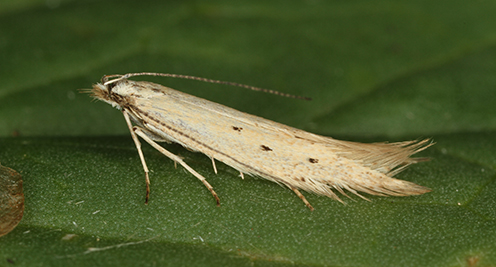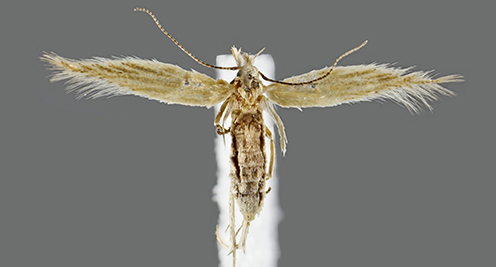Danish-Austrian research team discovers 44 new moth species
Over many years of research, scientists from the Tyrolean state museums in Austria and the Natural History Museum of Denmark at the University of Copenhagen have made numerous discoveries in the twirler moth family: a total of 44 new species were first described and named in the prestigious journal ZooKeys, with 22 of the moths discovered occurring in various European regions. The last time such a wealth of unknown moth species was described in Europe in a single publication was in 1887.

In the words of the authors of the study, Dr Peter Huemer, curator of the scientific collections of the Tyrolean state museums and Ole Karsholt of the University of Copenhagen’s Natural History Museum
“The dimension of newly discovered moths in one of the Earth’s most studied regions is both sensational and completely unexpected”: they see it as proof that “despite dramatic declines in many insect populations, our fundamental investigations into species diversity are still far from complete”.
The challenge of taxonomy
The study was triggered by the discovery in the South Tyrolean Alps of a previously unclassified species of twirler moth. Ensuring that all new discoveries were genuine necessitated a comprehensive 5-year research programme into original specimens of all known related species, conducted in numerous museums from Paris and London to Budapest.
In addition to the classical methods of determining species such as colour, markings and anatomical features, the latest genetic methods were applied to create genetic fingerprints for most species in the form of DNA barcodes.
A particular challenge for the researchers was the naming of the many new species: the names of colleagues, of the daughter of one of the authors or of different regions were all selected for this purpose. One species, of which only the female is known, has been named “Megacraspedus feminensis”. The names of two species from Afghanistan refer to the difficult political situation in the country: “Megacraspedus armatophallus” (derived from “armed phallus") is reminiscent of a revolver, while “Megacraspedus pacificus” is conceived of as an ambassador of peace. Finally, the species discovered in Tyrol has been immortalised with the name “Tyrolean twirler moth (Megacraspedus teriolensis)”.
Mysterious large twirler moths
All of the new moths belong to the family of twirler moths (Gelechiidae) and the genus of large twirler moths (Megacraspedus). With a wingspan ranging from 8 to 26 mm, they are rather small and generally inconspicuous in colour. They owe their name to the labial palps that protrude from the head. This group is especially interesting as it is in general short-winged, with females consequently flightless.
The causes of this remarkable shortness are unknown; as many species occur in high mountain areas, up to 3,000 metres above sea level, this may be an adaptation to the turbulent wind conditions there. Of the 85 documented species, however, both sexes are known in only 35 cases.

Scientists suspect that the as yet undiscovered females of many species are flightless and therefore very hard to find. The life of their caterpillars is similarly puzzling, with descriptions of only three species. All species live on different grasses. Huemer and Karsholt thus see an urgent need for further research to permit at least basic conclusions to be drawn about the biology and hence the endangered nature of large twirler moths.
Read more in ZooKeys here.
Related News
Contact
Ole Karsholt
Emeritus
Natural History Museum of Denmark
University of Copenhagen
E-mail: OKarsholt@snm.ku.dk
Thomas Pape
Associate Professor, Curator
Natural History Museum of Denmark
University of Copenhagen
E-mail: tpape@snm.ku.dk
Phone: +45 28 75 11 06
Photo
Photos on this web site can be used in connection with publicity of this story. The photographers must be credited. Click on the images for larger resolution.
